 The stories of how great brands have been built are as varied as the products themselves, from P&G's launch of Prilosec, which hit tens of thousands of shelves over a single weekend, to Tom & Tom of Nantucket Nectars personally growing their brand one boat at a time in Nantucket harbor. Just as the variation in businesses is vast, so is the variation in knowledge around how to build a presence in retail merchandising. There is a lot of common sense that goes into building a good retail presence, without which most consumer goods cannot survive, but relying on common sense alone is a fast path to failure. Retail merchandisingis extremely fast paced, and there is no time to experiment with retail execution tactics to make your product available to consumers; you need the expertise that has been built by the millions of years of combined experience in the industry. Here are the 10 most important tactics that we here at Repsly have identified during our hours of contribution to those years. These tips are aimed at the entrepreneur starting a new brand:
The stories of how great brands have been built are as varied as the products themselves, from P&G's launch of Prilosec, which hit tens of thousands of shelves over a single weekend, to Tom & Tom of Nantucket Nectars personally growing their brand one boat at a time in Nantucket harbor. Just as the variation in businesses is vast, so is the variation in knowledge around how to build a presence in retail merchandising. There is a lot of common sense that goes into building a good retail presence, without which most consumer goods cannot survive, but relying on common sense alone is a fast path to failure. Retail merchandisingis extremely fast paced, and there is no time to experiment with retail execution tactics to make your product available to consumers; you need the expertise that has been built by the millions of years of combined experience in the industry. Here are the 10 most important tactics that we here at Repsly have identified during our hours of contribution to those years. These tips are aimed at the entrepreneur starting a new brand:

Understand your relationship with retailers. The most important thing that you have to remember is that retailers are businesses that deal with supply and demand, not just the supply of and demand for products, but more importantly to you, the supply and demand of retail space. They use their supply of retail space to generate the most money they can per square inch of shelf space as possible. In order for you to be successful in retail merchandising, your product has to generate revenue for your retail partners. They don't owe it to you to give you space, you owe it to them to supply a product that will sell.
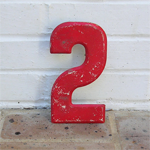
Have a great support plan. When you approach a retailer you need more than just a great product; you will need to clearly articulate what you are going to do to create demand and desire for your product. Share your marketing plans and the metrics you have about sales in similar outlets. Be prepared to answer questions about how you will prevent stock shortages when sales are good, and how you will make up for slow sales. Be prepared to make frequent visits to the retailer to merchandise your products, keeping the presentation fresh and stocked.
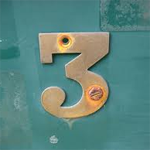
Have great packaging. You'll need this to capture the attention of consumers, but don't underestimate the importance of appealing to retailers and distributors. They will be much more open to carrying your product if your product is appealing and looks like it will sell well.
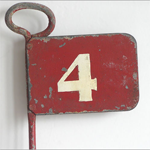
Fight for position. Just because your product looks great doesn't mean that consumers will find it. Your product has to be well positioned in the store, and all your competitors will want the same space. You need to decide how valuable it is for you to be at eye level on the shelf, near the register, in the cooler, or in the snack aisle vs. the healthy foods section. Your position in the store can have a great impact on your sales, and you should be prepared to negotiate to get the best position possible.

In-store promotion. In addition to great packaging, you will need additional tools to bring attention to your product. 'Shelf talkers' that hang into the aisle, door stickers for coolers, floor stickers, window posters… these all give your product a better chance at life, but realize that these things will cost you. Not only are they expensive to design and produce, but your retailers will expect some sort of pay-back for allowing you to promote your product in their stores. They will want to limit how much in store promotion goes on; imagine the clutter if every product had some sort of in-store swag!
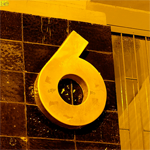
In-store sampling. If you are in the food, beverage, candy or snack space, one of the best things you can do to get new customers is to provide sampling in the store. Get enthusiastic reps to give away sips and nibbles and then point those consumers to your product on the shelf. If your product isn't edible, give consumers a chance to touch, feel, smell and otherwise experience the product first hand. Consumers are much more likely to trust a new product if they've had some sort of hands on experience with it.

Formalize the relationship with retailers. If you are just getting started, or if your product is a great fit for 'mom & pop' operations, it is a good idea to have a structured approach to how your products will be merchandised. Document the incentives that you will offer for different benefits, such as presence near the register, in-store displays or mention in the retailers advertising. Make sure that your expectations are fair, clear and measurable.

Spend time in the market. You or your representatives must spend time with your product in the market gathering data points about sales, velocity, compliance and competition. See first-hand how the product is being displayed on the shelf… is it at eye-level or at foot level? Is it in stock? Is it in the right part of the store? Are competitors in a better position, or at a better price? Is the retailer displaying your posters or other in store marketing? Is the retailer in compliance with the agreements that you made?
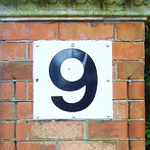
Leverage feet on the street. One person cannot make a big enough impact to establish a product in the market. Make investing in a merchandising team a very high priority. Whether it is hiring your own team, partnering with a 3rd party merchandising organization or working with distributors that also provide merchandising services, you will need many hands, eyes and ears in the market to create and maintain a winning presence.
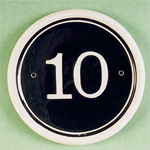
Measure, analyze and adjust. As you get broader distribution, the individual data points will form a 'big picture' of how to maximize your return in retail. Leveraging field management software can help field marketing managers turn the data capturing efforts of field reps into usable metrics and insights that will make the effort even more productive. You will find that different in-store tactics drive different results depending on the type, demographic and location of the outlet. As your reps conduct data capturing, and field marketing managers analyze the data, you can adjust your approach to recruiting new retailers, and you will be in a much better position to negotiate your presence.
Developing your product is a much smaller part of the road to success than many entrepreneurs are willing to acknowledge. A great product needs to be in front of consumers in order to become viable. On-line sales of most products are not sustainable until they are already known, accepted, and demanded by consumers who have purchased them at retail.
Building a strong retail presence is expensive and requires a tremendous amount of work. There is no room or time to make mistakes when bringing your product to the market, and luckily there is a tremendous pool of experience for you to take advantage of when taking the leap into retail.


 The stories of how great brands have been built are as varied as the products themselves, from
The stories of how great brands have been built are as varied as the products themselves, from 









.png?width=480&height=252&name=PRESS%20RELEASE-2%20(4).png)

